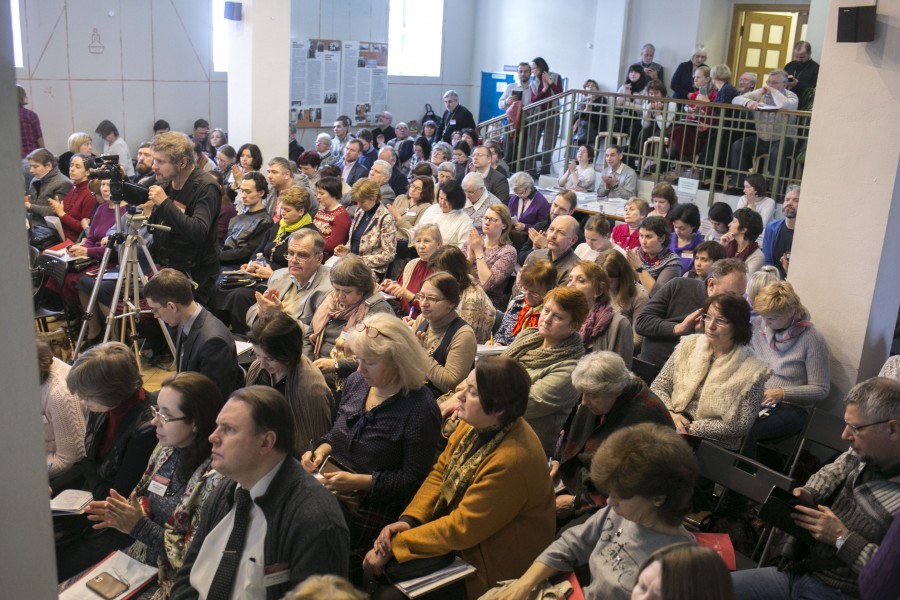Forge Spiritual Bonds in Community!
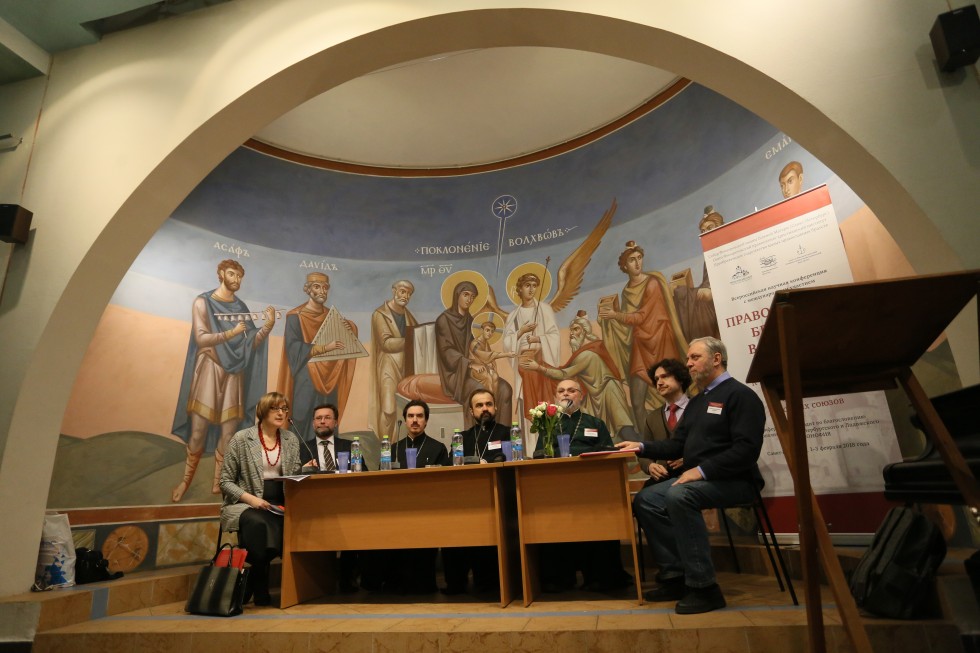
One hundred years ago, on 1 February, 1918, in the thick of the revolutionary events and the beginnings of persecution against the church, sensing the beginning of a new era in church history, Patriarch Tikhon called the bishops and priests who were the church’s pastors at the time to “forge spiritual bonds in community.” Across the breadth of an entire century the witnessing voice of Patriarch Tikhon seems to have reached the ears of today’s pastors, arch-pastors and faithful of the Russian church, in which – with eyes illumined by faith – we can see not only historical interest in the tradition of brotherhood, but a rebirth of that tradition itself.
One sign of this good news was a recent conference held at the New Martyr Archimandrite Lev (Egorov) Conference Centre of the Cathedral of the Fyodorov Icon of the Mother of God in St. Petersburg. The Conference, entitled “Orthodox Brotherhoods across Russian History”, took place from 1 to 3 Feburary with the blessing of his Eminence Metropolitan Varsonofy of St. Petersburg and Ladoga. At the conference, we heard about various aspects of Orthodox brotherhood life: how brotherhoods were founded, how more recent brotherhoods differed from their pre-revolutionary counterparts, how they reacted to persecution, the influence brotherhoods had on the church’s independence and her role in society, and future prospects for the brotherhood movement in our country.
100 Years Ago…
It is only with difficulty that we can imagine the entire tragedy of what happened 100 years ago: both the church hierarchy and laypeople, the cream of whom had just finished participating in a local church council, believed that finally the church was about to be free of the watchful eye of the state. But instead, after the October Revolution, “they were doomed to watch Orthodox Russia become an iconoclastic hell,” says Fr. Georgy Mitrofanov, head of the Department of Church History at the St. Petersburg Academy. From all corners of the country, reports began to come in that clergy were being murdered at the hands of people “who were born Orthodox Christians.” “Amidst these reports of mass murder not only of clerics, but even of innocent faithful, even the murder of the Emperor and his family didn’t seem unusual,” adds Fr. Georgy. State authorities began to recruit common citizens to join in with the iconoclastic behaviour and the people of the nation, who until very recently had considered themselves Orthodox, actively supported the anti-church campaign.
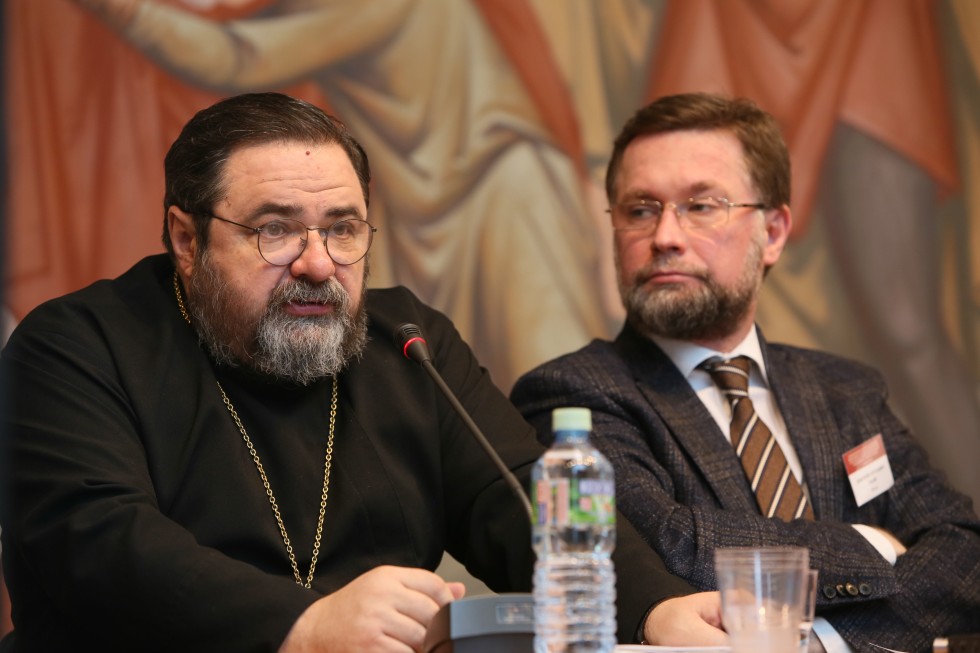
Fr. Georgy Mitrofanov, head of the Department of Church History at the St. Petersburg Academy; Dmitry Gasak, Vice Rector of SFI and Chairman of the Transfiguration Brotherhood
One of the first infringements of the church’s holiness was the seizure of the Alexander Nevsky Cathedral by Soviet authorities in February of 1918. Historian Mikhail Shkarovsky, Chief Archivist of the Central State Archives, tells the story: in reaction to demands by the People’s Commissar Alexander Kollontai to hand over all Cathedral property to the People’s Committee, the clergy and laypeople of the city gathered to defend the cathedral and decided “to firmly declare to the people’s commissars that Orthodox Russian believers would not tolerate seizures of church or monastery property, nor the desecration of the church’s sacred relics.” The resolution was signed by Metropolitan Venyamin of Petrograd, both his suffragan bishops, and all others who were present. The signed documents were sent around from church to church within the city. Therefore, rather than wait for the voluntary handover of the cathedral, on 1 February (19 January on the old calendar), authorities sent armed forces to the cathedral with the aim of taking it by force. An irregular bell toll attracted a crowd of people to stream in the direction of the cathedral. The priest in charge of the Church of the Joy of All Who Sorrow, Fr. Pyotr Skipetrov, tried to bring the soldiers to their senses, but was mortally wounded as a result. Over the next two days, Metropolitan Venyamin calls people to process in defense of the cathedral, and at one of these meetings the Alexander Nevsky Brotherhood was founded.
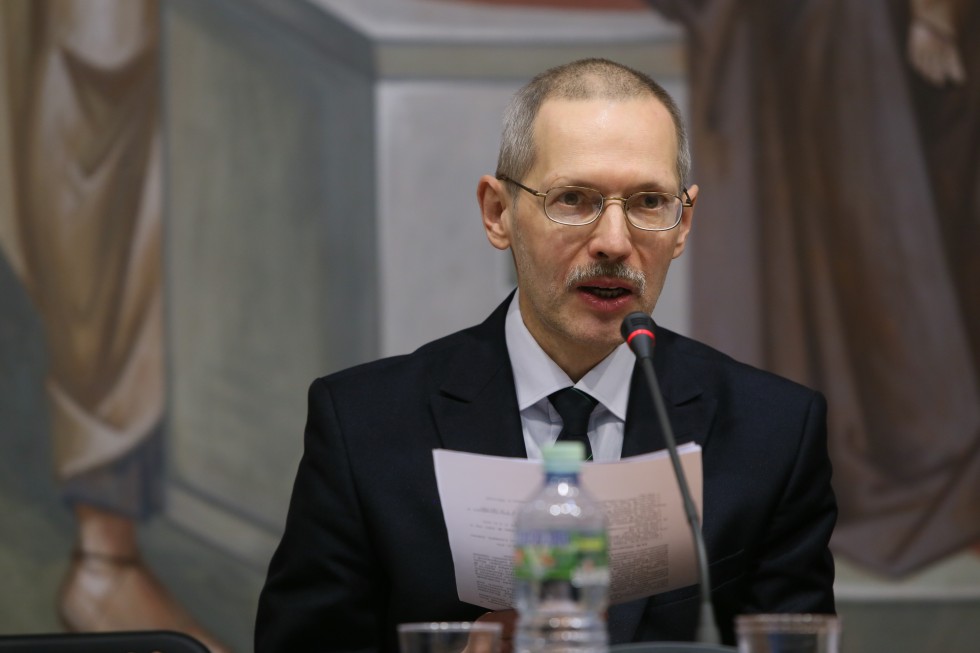
Mikhail Shkarovsky, Chief Archivist of the Central State Archives
Senior researcher at the Russian Academy of Science’s Centre for the study of the History of Religion and the Church Alexey Beglov, says “the events around the Alexander Nevsky Cathedral were the quintessence of what was happening across the entire country… similar things were happening across all of Russia – on the wave of persecution which was beginning against the church at that time, society was being polarized. More and more, either you were with the persecutors, or you were a defender of the church. Fewer and fewer “lukewarm” Christians could be found at that time.”
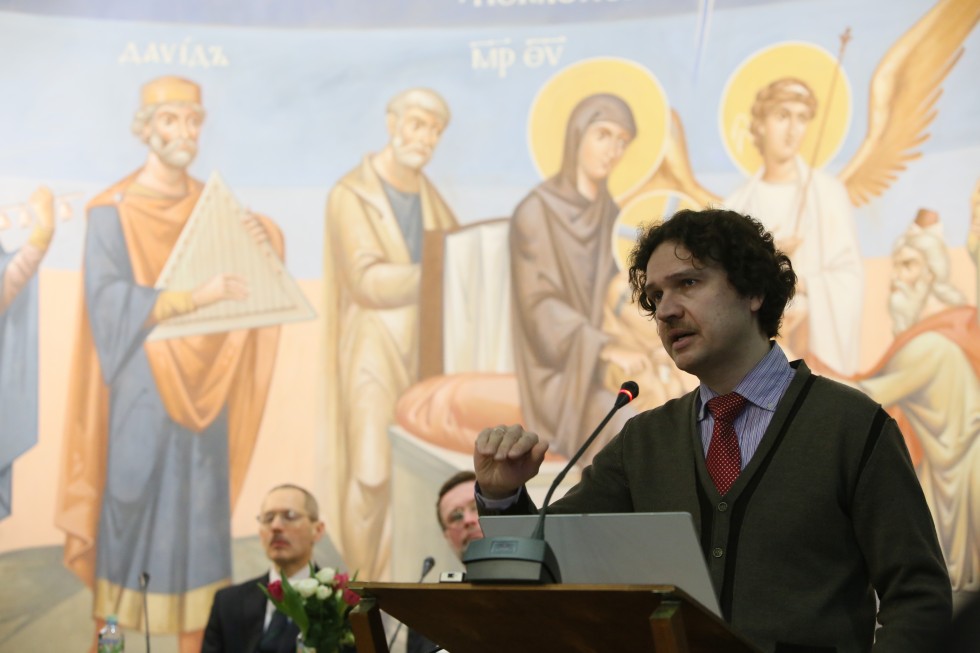
Senior researcher at the Russian Academy of Science’s Centre for the study of the History of Religion and the Church Alexey Beglov
A change in the consciousness of church hierarchs and clergy at the time also favoured the formation of brotherhoods. This is shown definitively in the decisions of the local council of 1918, which are positioned to foster the development of local initiatives and, first and foremost, in the institute of the “Parish By-laws”, which envisaged broad integration of parishioners into church decision making bodies.
This was a real revolution. Informal communities of faithful began to pop up all across the nation. These not only defended the relics of the church but – as time went on – aided those who were suffering repression at the hands of Soviet authorities, organized charitable work in hospitals and orphanages, and even took on educational and missionary endeavours. The memoirs of eye-witnesses, as well as research into the era, bear witness to the unusual spiritual atmosphere which reigned in the new brotherhoods and spiritual communities which were growing out of existing parishes.
Before and After the Revolution
By 1914, there were already 700 Orthodox brotherhoods across Russia, and these were engaged in a wide range of activities. The brotherhoods that were formed after 1917, however, differed categorically from their pre-revolutionary counterparts, stressed Yulia Balakshina, the Academic Secretary of St. Philaret’s Institute. According to Balakshina, “by the 1920s, nearly all the former brotherhoods were gone, but at the same time a new wave of brotherhood activity was on the move.”
Pre-revolutionary brotherhoods were generally differentiated by activity (missionary, charitable, educational, church-building), as well as by size and administrative particularity (diocesan, parish-based, attached to specific religious educational institutions), and by the character of their internal integrity (brotherhood societies, brotherhoods of love). The post-revolutionary brotherhoods have, thus far, been less studied, but it is obvious that the majority of these brotherhoods arose out of the need to protect Orthodox relics from desecration. In this sense, one might categorize them as “guardian” brotherhoods, and compare them to the brotherhoods of South-western Rus. But, as Balakshina points out, “first legally, in the short period from 1918 to 1922, and then half-legally in the period up until 1932, these brotherhoods took upon themselves the responsibility for tasks such as mission and spiritual/religious education, in an environment in which more traditional church institutions where no longer able to execute these functions. And progressively, as the leadership of the various brotherhoods was forged, a more extreme task arose – to preserve and rekindle the life of the church.”
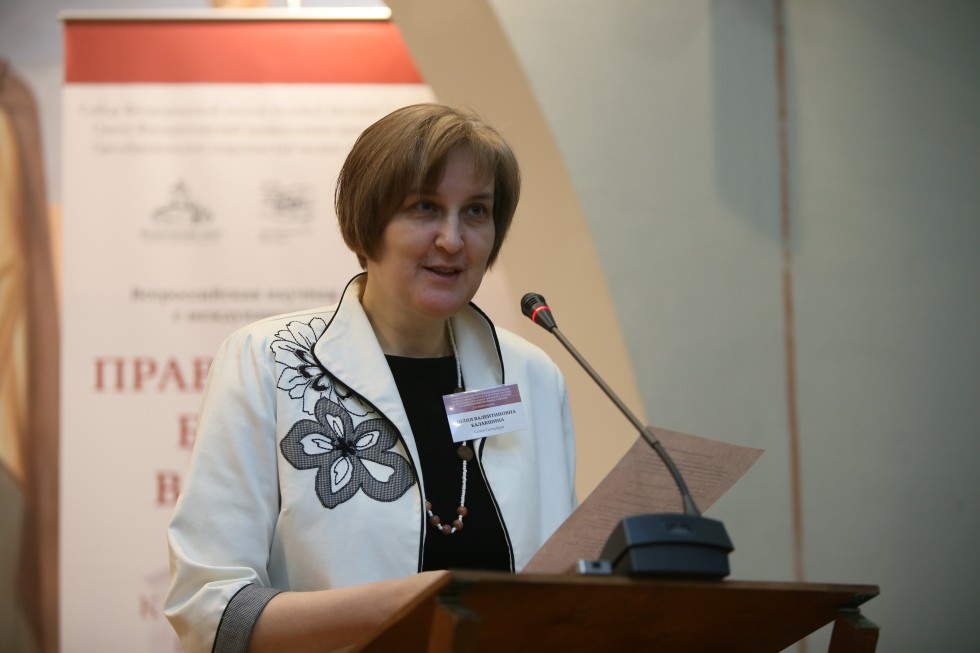
Yulia Balakshina, the Academic Secretary of St. Philaret’s Institute
Soon after the revolution, brotherhoods ceased to be attached to one or another church-administrative body with specific location, and became, rather, inter-parochial or non-parochial. Whereas brotherhoods had previously existed primarily at the frontiers of the Russian Empire, with their missionary and educational functions, after the Revolution we see brotherhoods arising most often in the big cities: Petrograd (the Alexander Nevsky Brotherhood and more than twelve other brotherhoods), Moscow (The Brotherhood-Community of Zealots and Preachers of Orthodoxy), Kiev (the Brotherhood of the Sweetest Lord Jesus, founded by Archimandrite Spiridon (Kislyakov). “The brotherhoods of this new historical era were formed as a result of people’s personal decisions and the responsible ecclesial position they chose to adopt,” says Balakshina. Living conditions not only forced brothers and sisters to move around from church to church within a city, but also partially or completely dispersed their groupings as a result of Soviet repression; but being severed from a specific “home base” didn’t cause their faith to crumble or the bonds between them to be broken.”
If brotherhoods from the synodal period more resembled NGOs, then those which arose after 1917 again took on a more church-like character, which they themselves understood not as innovation, but as a return to authentic tradition. As new martyr Innokenty Tikhonov, one of the founders and leaders of the Alexander Nevsky brotherhood wrote, “Many people know about Orthodox church brotherhoods only by rumours and view these supposed brotherhood as something new and unprecedented, and therefore as unable to take root here among us. But the phenomenon of brotherhood is ancient… it is the life of the Church in a Church which is not understood as external institution, but, on the contrary, as our family and our true union in Christ… Under the conditions in which we live, brotherhood is the only form of Church community which is authentic, and a form which, moreover, it seems couldn’t even be destroyed by the gates of hell themselves.”
At a Turning Point between Epochs
The fact that brotherhoods strive to embody the fullness of Gospel revelation points out something interesting about their ecclesiological basis. Father Georgy Kochetkov, Rector of Saint Philaret’s Institute and Founder of the Transfiguration Fellowship of Minor Orthodox Brotherhoods, shares his thoughts about how the four markers of church named in the Creed – unity, holiness, conciliarity and apostolicity, are embodied in small communities and brotherhoods. The Transfiguration Fellowship is the best know brotherhood movement within the ROC today.
Brotherhoods have moved the church far forward in the direction of unity, insofar as they are significantly more daring and open in terms of inter-confessional and inter-church relations. “This isn’t boundless ecumenism, but a movement of the heart, as it acquires a common language of love. Often church people aren’t searching for that language of love, or else they seek it only in the social and political realms,” says Fr. Georgy.
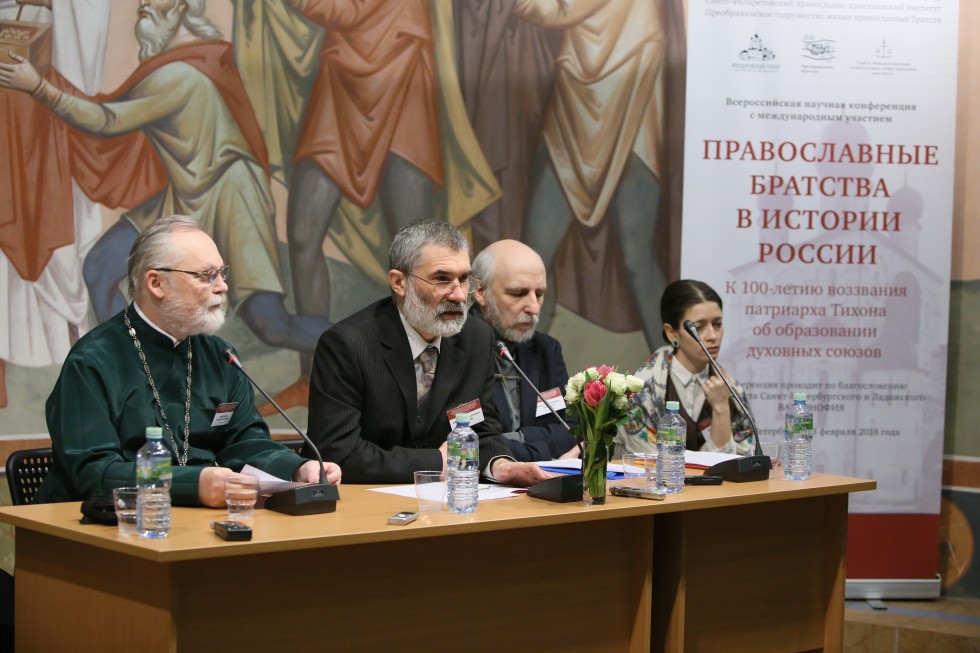
The brotherhood and small-community experience reanimates the ascetic tradition of the church which is, according to Fr. Georgy, today often radically simplified or twisted is such a way as “secondary elements are presented as primary, while the primary elements are forgotten or shifted to the periphery.”
It is possible to talk about the renewal of the church in its community and brotherhood aspect in the spirit of conciliarity, believes Fr. Georgy. “This is evident from the history of post-revolutionary brotherhoods: from how they choose their elders, without the slightest argument or suspicion of anticlericalism, from how they come to consensus about the main principles which guided their internal life.” Along with this evidence, there is also the revived interest we see within brotherhoods to include all the faithful in church life and to overcome the problems of individualistic Christianity and nominal Christianity, with their resulting distorted relationship to the church mysteries.
Fr. Georgy also spoke of the fact that the church has constantly returned to its community and brotherhood foundations and even to their forms: “The apostles lived in community and founded brotherhoods, not parishes or diocese. We need to take account of this in order to understand why life in small communities and brotherhoods is an indispensable aspect of the fullness of church life.” In addition, as Fr. Georgy stressed, what we understand by “brotherhood” today is not the same as what we understand when we say “church”: over the course of two thousand years that understanding has been significantly enriched and in our time the word “brotherhood” is, to some degree, a neologism.
When one era roles over into another, church tradition is always renewed and gives birth to new forms. Today, when both the multi-century Constantinian Era in church history and the incredibly destructive Soviet era have come to an end, new relationships between church and state, church and society, church and culture and church and the nation are bound to form – and Orthodox brotherhoods are likely to have a significant hand in the formation of these new relationships. That which stands against the brotherhood movement today “demonstrates itself as something that is not of the church or is even anti-church,” stresses Fr. Georgy. In his opinion, the strengthening and development of the community and brotherhood principle within the church will enable its internal renewal and recovery of health, making it possible for the church to stand against clericalism, disintegration into “micro-confessions”, the anti-Christian tendency to fundamentalism, and secularism.”
Brotherhoods in the New Era
So what is brotherhood in our contemporary church setting – “medicine for the parish”, unification that enables Christians to make decisions as per various questions, a church assembly, a “community of love”? What is the role of brotherhood? And what are the prospects for the brotherhood movement as a whole?
“The word “brotherhood” has two connotations. First, there is brotherhood as a principle – as a quality or aspect of the church – which, while not written into the Creed, is nevertheless a significant aspect of the Church. We see the word “brotherhood” in the New Testament, and Christ entrusts brotherhood to his disciples. The second connotation is that of a gathering – an empirical reality and synonym of ‘church community’”, says Fr. Alexander Sorokin, priest in charge of the church of the Fyodorov Icon of the Mother of God.
In answering a question that Fr. Georgy Mitrofanov posed during the course of the conference about the role of brotherhoods in the survival of the Russian church during the years of repression, Fr. Konstantin Kostromin, Vice Principle for Theological Research at the Orthodox Seminary in St. Petersburg, characterized brotherhood as an assembly through which the Holy Spirit acts: “Brotherhoods, no matter how different they might be from each other, were none of them created by command. They always arise in answer to a demand from life itself. In tsarist Russia, brotherhoods were the solution to various social tasks, and during the repression they defended the church. This was a natural manifestation of the Spirit; brotherhoods not only helped the church to survive, but were a manifestation of the Spirit Himself – his instrument.”
“Thanks to brotherhoods during the years of repression the words of Christ were fulfilled: ‘I will build my church and the gates of hell shall not prevail against it” (Mt 16:18). And “the gates of hell” did not prevail against the church, because brotherhoods were that form in which it was given to the Holy Spirit to bear fruit,” believes Fr. Alexander Sorokin.
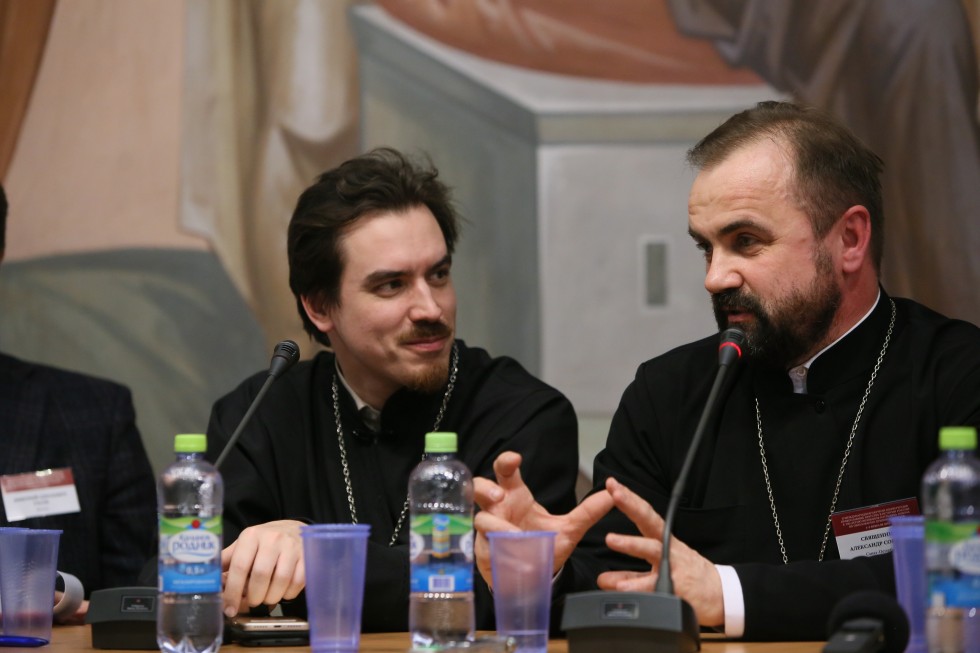
Fr. Konstantin Kostromin, Vice Principle for Theological Research at the Orthodox Academy in St. Petersburg; Fr. Alexander Sorokin, priest in charge of the church of the Fyodorov Icon of the Mother of God
Fr. Georgy Kochetkov reminded us of some sad facts in the history of our church, such as the disappearance of Orthodox churches in Asia and Northern Africa, noting that the life of our church depends upon us: “God acts through people, and man can reject the action of God’s grace and block God’s action.” In his opinion, considering the tragic nature of our history, brotherhoods were “a revelation from on high for our church, if a little late. Some of the strongest laypeople were members of brotherhoods. I am very glad that at the initiative of St. Peter’s Brotherhood a memorial cross has been erected at Levashovskaya Pustosh in honour of those members of brotherhoods who gave their lives during the years of repression. In remembering, as is due, these people who stayed faithful to God and the Church to the end, we might say that they, themselves, are a treasure that we should share with the whole world. Brotherhoods helped our church both to live and to survive.”
In speaking of contemporary conditions in which brotherhoods might arise, Dmitry Gasak, Vice Rector of SFI and Chairman of the Transfiguration Brotherhood noted that today both society and legislation in Russia allow for the creation of voluntary groupings of people, while, at the same time, the Regulations of the ROC do not specify or envisage a place for such groupings. “This speaks to the difference between societal and church consciousness – that the church doesn’t use opportunities which are open to it today.”
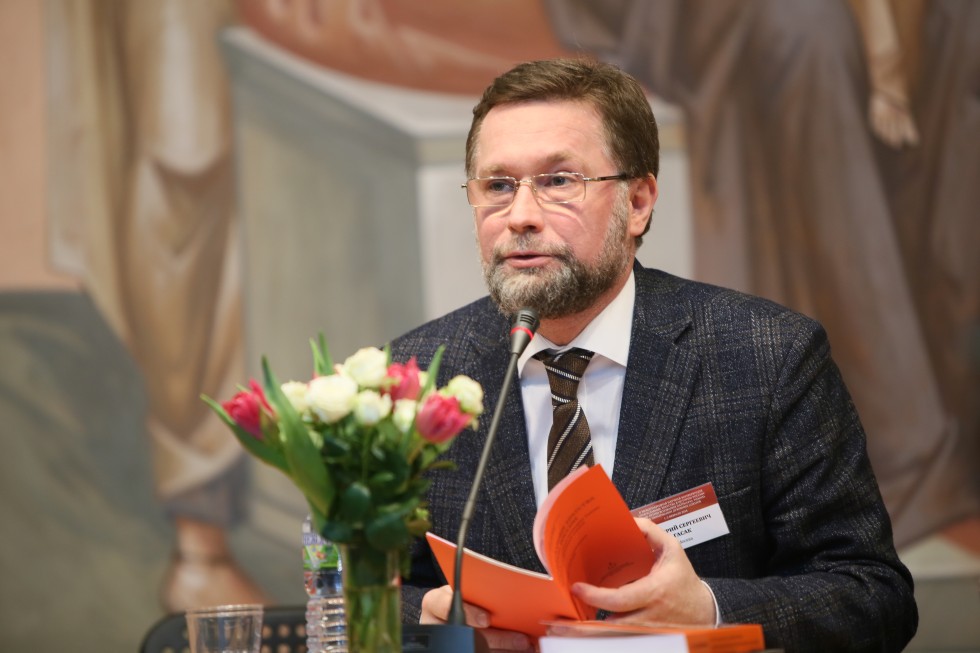
Dmitry Gasak, Vice Rector of SFI and Chairman of the Transfiguration Brotherhood
In addition, as factors bringing about the formation of brotherhoods, external conditions are, in general, secondary to internal impulses related to faith in the Church. “Often there isn’t enough faith of this type, otherwise there wouldn’t be such stagnation as regards the various difficulties and problems in church life today,” believes Dmitry Gasak. “Where there is faith, it is often possible to do much that is seemingly impossible: we might remember how Fr. Pavel Adelgeim built a church in Kagan in 1969, despite the direct prohibitions of the authorities. Faith in the Church comes first; we must hold to and reinforce this faith despite any difficulties, dangers or inconveniences that we might encounter.”
In Fr. Georgy Kochetkov’s opinion, there is no obvious drive toward life in community and brotherhood at the moment, though there is a good deal of interest in informal communities united by a living faith, especially among young people. And this catches the eye, especially against the backdrop of growing negativity as regards official church structures. “The church is no long understood or accepted. People have once again begun to reject the church, often with some amount of spite…and not only in Moscow, but all across the nation. This has now been going on for some time and it is impossible to ignore, said Fr. Georgy. I end up working quite a bit with the Internet, and am amazed at the degree to which interest in living and informal community is growing. When we hold big, open recruitment meetings before beginning catechesis, people accept us gladly when they learn that we represent a brotherhood, but when we say that we are members of the church they ask in a disappointed fashion, “what, the ROC?” We say, “yes”. For this reason, before it is too late, we need to speak of this living church rather than about one or another ossified or antiquated outward expression of church.”
In Fr. Georgy’s opinion, 100 years ago the church was already “too late”, and “for 100 years we have paid for this with our blood.” Today we need to rely on our “particular Russian tradition” – the inheritance of Alexey Khomyakov and other Slavophiles – who take as their starting point conciliarity (sobornost) and community relationships, as well as the inheritance of the local council of 1918, which “came to very serious conclusions but has not been properly closed”; and here we see the potential of community and brotherhood life which has been preserved in the Old Believers tradition.
“And if we don’t forget that history moves very fast and that we can’t ‘be late’ a second time, then the prospects for the brotherhood movement within our church are very good. We believe in the revival of our church life and the life of our nation as a whole, even despite all the destruction of the Communist era. But this revival may happen or it might not happen,” Fr. Georgy believes.
In summing up their experiences of the conference, participants expressed their solidarity with the words of Fr. Konstantin Kostromin, who said, “I eagerly await a continuation.”
A Russia-wide Research Conference entitled “Orthodox Brotherhoods across Russian History: on the 100th Anniversary of Patriarch Tikhon’s call to Form Spiritual Bonds in Community” took place on 1 to 3 February with the blessing of his Eminence Metropolitan Varsonofy of St. Petersburg and Ladoga at the New Martyr Archimandrite Lev (Egorov) Conference Centre of the Cathedral of the Fyodorov Icon of the Mother of God in St. Petersburg. The conference was organized by St. Philaret’s Institute, the Cathedral of the Fyodorov Icon of the Mother of God in St. Petersburg, and the Transfiguration Fellowship of Minor Orthodox Brotherhoods.
226 people from 18 cities across Russia, Moldova, Belarus and Latvia took part in the conference. 23 papers on Orthodox brotherhood life and history were presented in 2 plenary sessions, 5 special sections and a final round-table discussion. The conference also featured an evening of music and an evening of memory, in which living relatives of members of historical brotherhoods took part. Among the conference participants were: members of the Ioann Churikov “Sober Life” Society, the “Sorok Sorokov” Movement, the Transfiguration Fellowship, representatives of the Cathedral of Prince Vladimir and the Fyodorovsky Cathedral, the local representation of the Valaam Monastery and the St. Petersburg Association of Cossacks.
